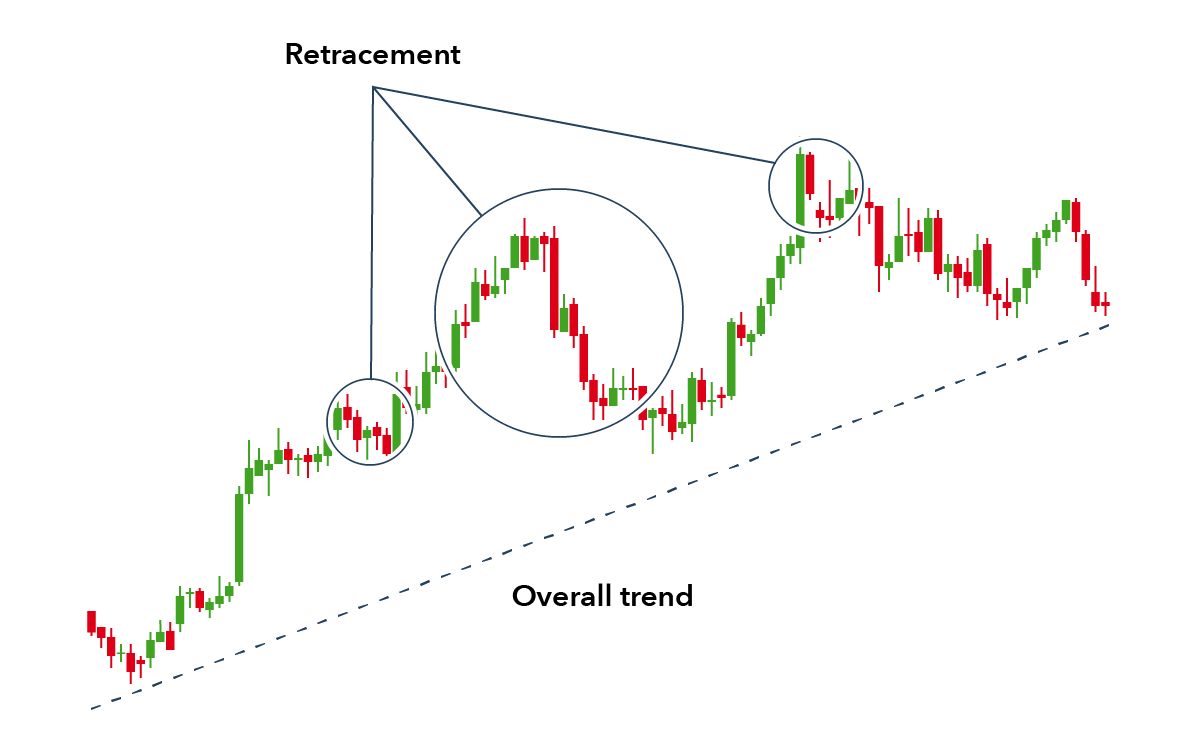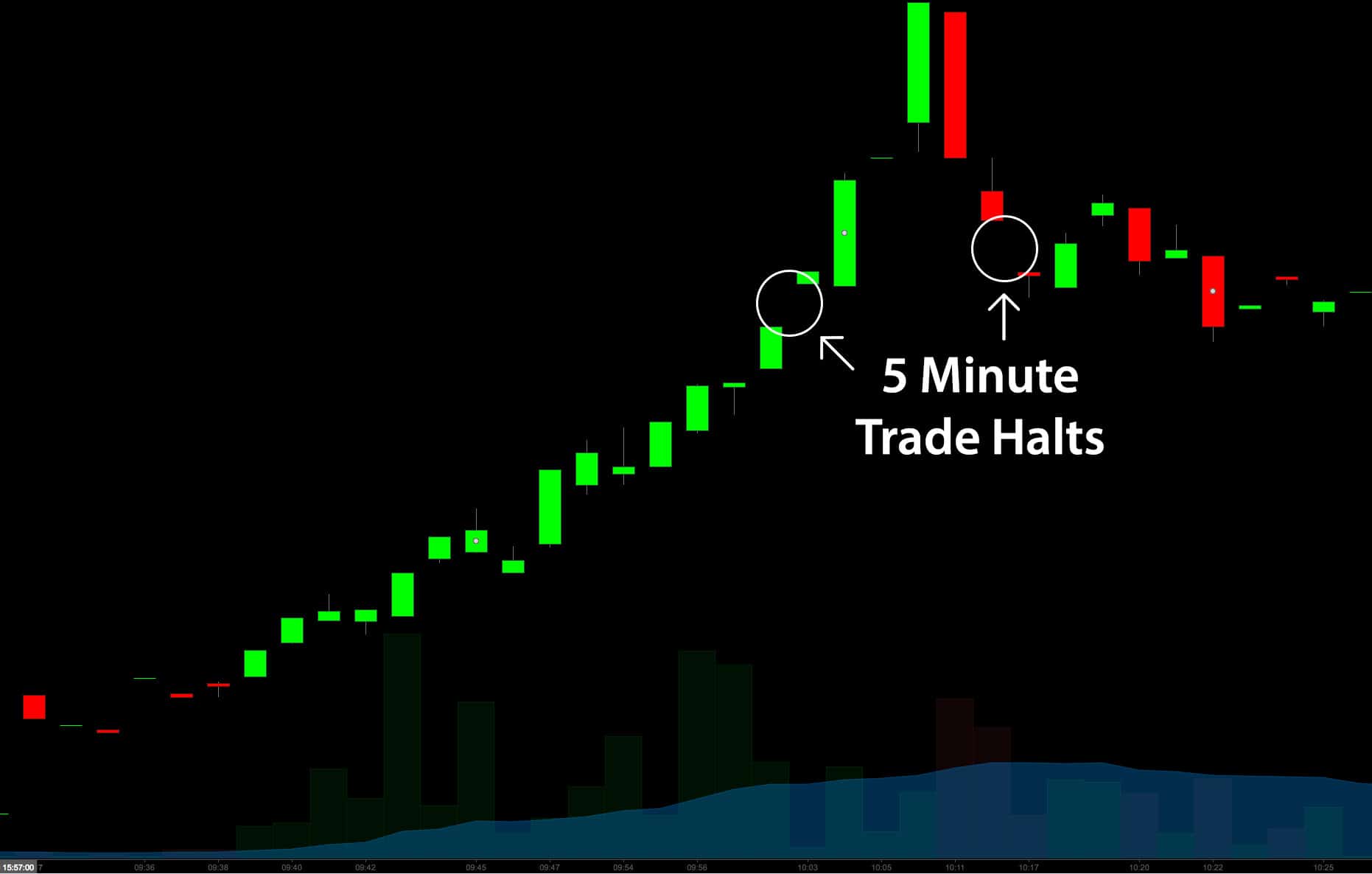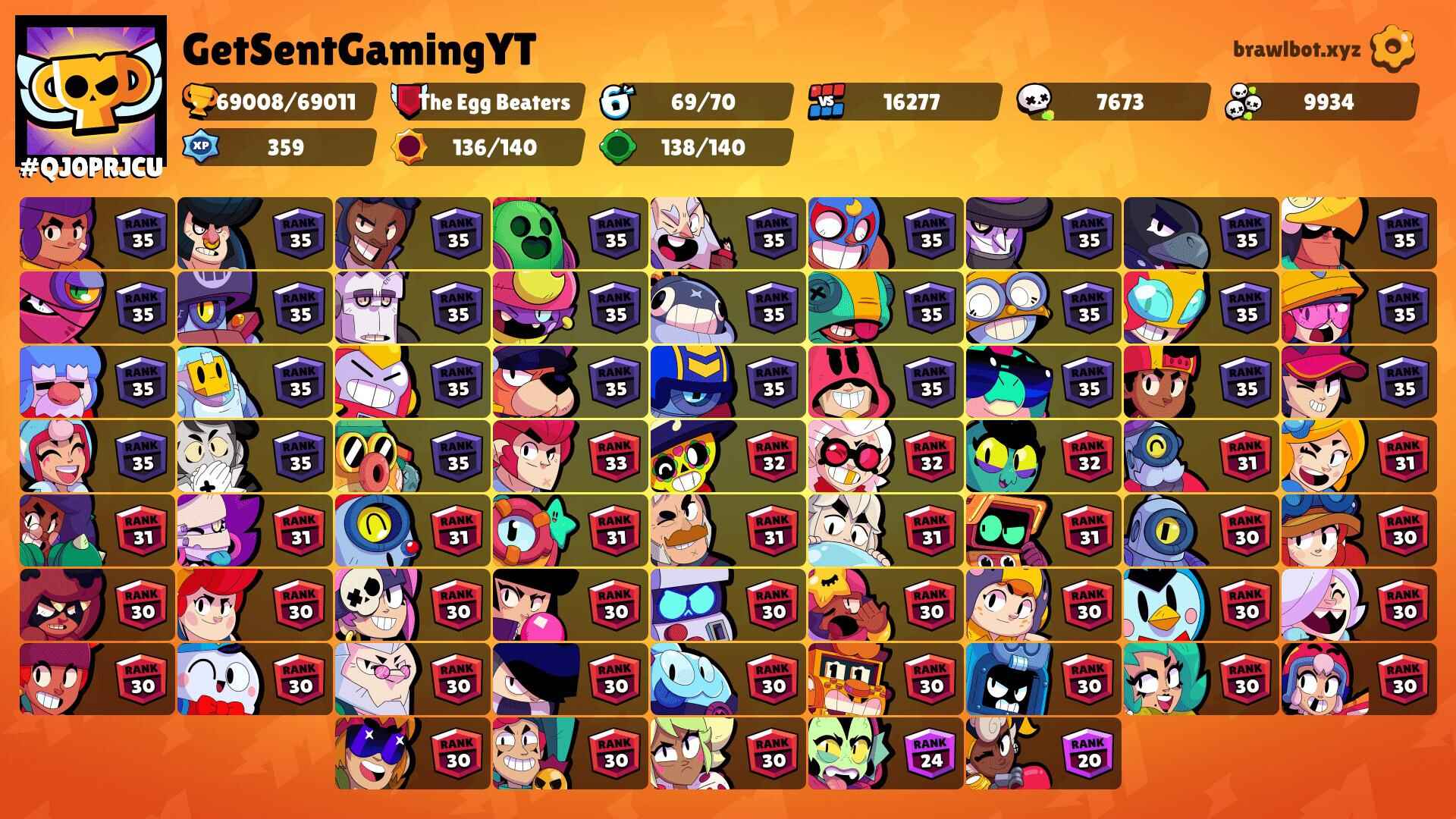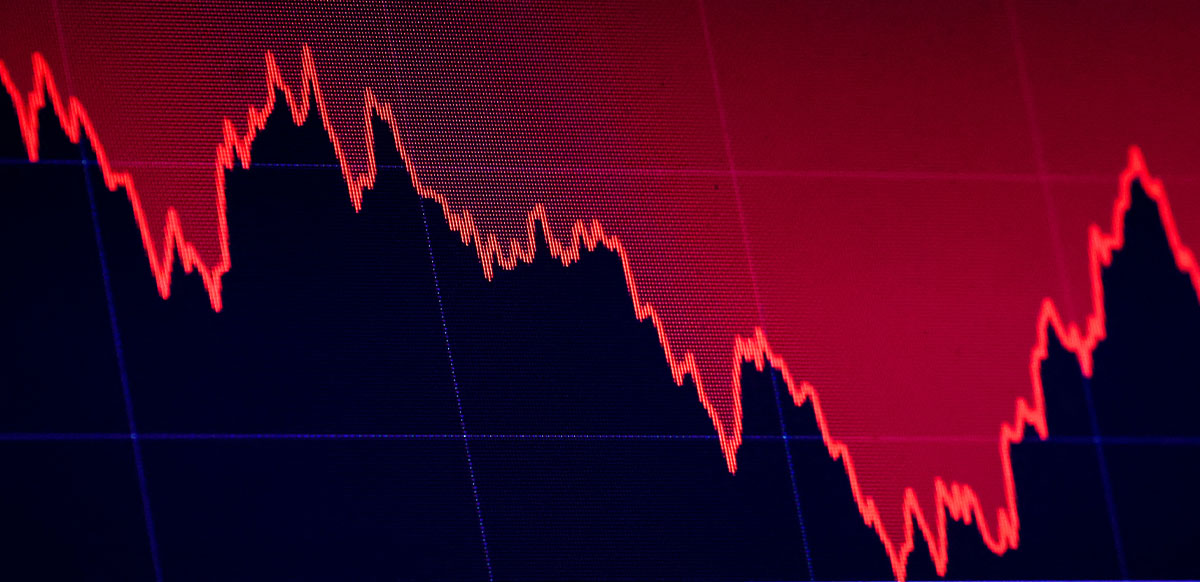The Basics of Trading Systems
Trading systems are a set of rules and parameters that guide traders in making their buying and selling decisions in the financial markets. These systems are designed to take the emotion out of trading, allowing traders to make objective decisions based on predefined criteria.
At their core, trading systems aim to capitalize on market trends, identify entry and exit points, and manage risk effectively. They can be developed for various financial instruments, including stocks, bonds, commodities, and currencies.
One key aspect of a trading system is the time frame it operates on. Some systems are designed for short-term trading, such as day trading, while others focus on long-term trends. The choice of time frame depends on the trader’s goals, risk tolerance, and trading style.
A trading system can be based on either technical analysis or fundamental analysis. Technical analysis involves studying charts and price patterns to predict future price movements. Traders using technical analysis rely on indicators, trend lines, and oscillators to identify trading opportunities.
On the other hand, fundamental analysis focuses on economic and financial factors that impact the value of an asset. Traders using fundamental analysis examine company earnings, news events, and economic data to determine the underlying value of a security.
Once the trading system is defined, it needs to be backtested using historical data to evaluate its performance. Backtesting involves applying the system’s rules to past market data to see how it would have performed. This process helps traders identify potential flaws and make necessary adjustments before applying the system in real-time trading.
Risk management is a crucial component of any trading system. It involves determining the appropriate position size, setting stop-loss orders, and implementing risk-reward ratios to protect capital. A well-designed trading system incorporates risk management principles to prevent large losses and preserve capital.
Implementing a trading system requires discipline and consistency. Traders need to stick to the predefined rules and not deviate based on emotions or market noise. It is also essential to continually review and refine the trading system, adapting to changing market conditions.
While trading systems can be effective tools for generating profits, it is important to note that no system is foolproof. Market conditions can change rapidly, and unexpected events can impact the efficacy of any trading system. Traders should always exercise caution and use good judgment when applying a trading system.
In summary, trading systems provide a structured approach to trading in financial markets. They help traders make objective decisions based on predefined rules and parameters. By incorporating risk management principles and consistent implementation, traders can increase their chances of achieving success in the markets.
Components of a Trading System
A trading system is made up of several key components that work together to facilitate the decision-making process and execution of trades. Understanding these components is essential for developing a robust and effective trading system. Let’s explore some of the key components:
- Entry Rules: These are the criteria that determine when a trader should enter a trade. Entry rules can be based on technical indicators, price patterns, or fundamental analysis. For example, a trader might have an entry rule that states they should buy a stock if its price breaks above a certain moving average.
- Exit Rules: Exit rules dictate when a trader should exit a trade. They are equally important as entry rules for managing risk and locking in profits. Exit rules can be based on profit targets, stop-loss levels, or trailing stops. For instance, a trader might have an exit rule to sell a stock if it drops below a specific support level.
- Position Sizing: Position sizing refers to determining the appropriate size of each trade based on risk tolerance and account size. It helps to ensure that no single trade overly exposes the trader’s capital. Position sizing can be calculated based on a fixed percentage of account equity or using more complex algorithms considering factors such as volatility and risk-reward ratios.
- Risk Management: Risk management is a vital component of any trading system. It involves setting stop-loss orders to limit potential losses, utilizing profit targets to lock in gains, and implementing risk-reward ratios to maintain a positive expectancy. Effective risk management ensures preservation of capital and reduces emotional decision-making.
- Trading Timeframe: The trading timeframe refers to the length of time in which a trader intends to hold their positions, such as day trading, swing trading, or long-term investing. The trading timeframe determines the frequency of trading decisions and the type of analysis used to identify trading opportunities.
- Money Management: Money management deals with how the trader allocates their capital across different trades and asset classes. It involves diversification, proper allocation of risk, and managing the overall portfolio’s exposure. Money management helps in spreading risk and optimizing returns.
By having clear and well-defined components, a trading system provides structure and consistency to the decision-making process. It removes emotions and impulsive actions, allowing the trader to focus on the execution of their strategy. Each component of the trading system works together to create a holistic approach to trading.
In addition to these core components, traders may also include additional factors such as trade filters, trend identification tools, or specific market conditions that need to be met before executing a trade. The customization of a trading system depends on the individual trader’s preferences, experience, and trading style.
To conclude, understanding the components of a trading system is essential for developing a successful approach to trading. By carefully defining entry and exit rules, managing risk effectively, and incorporating proper position sizing and money management, traders can increase their chances of achieving consistent profitability in the markets.
Technical Analysis in Trading Systems
Technical analysis plays a significant role in many trading systems. It involves the study of historical price data and the use of various indicators and chart patterns to forecast future price movements. By analyzing past market behavior, technical analysis helps traders identify potential trading opportunities and make informed decisions.
One of the key principles of technical analysis is the concept of price action. It suggests that all relevant information about an asset is reflected in its price and that historical price patterns tend to repeat themselves. Traders who use technical analysis believe that by studying these patterns and indicators, they can gain insights into future price movements.
Technical analysts use a wide range of tools and techniques to analyze price data. These include:
- Chart Patterns: Chart patterns such as support and resistance levels, trend lines, and reversal patterns provide visual representations of market behavior. Traders use these patterns to identify potential entry and exit points.
- Indicators: Technical indicators are mathematical calculations applied to price and volume data. They help traders identify trends, momentum, overbought or oversold conditions, and other market dynamics. Popular indicators include moving averages, oscillators, and trend-following indicators.
- Candlestick Patterns: Candlestick patterns provide insights into the psychology of market participants. They consist of individual candlestick formations and combinations that indicate potential trend reversals or continuation. Traders use candlestick patterns to confirm signals and make trading decisions.
- Support and Resistance Levels: Support and resistance levels are significant price levels where buying or selling pressure is expected to emerge. Traders use these levels to determine potential entry and exit points, as well as to set stop-loss and take-profit levels.
Technical analysis is not without its limitations. Critics argue that it is based on historical data and may not accurately predict future price movements. Additionally, technical analysis can be subjective, as different traders may interpret the same data differently. However, many traders find value in technical analysis as part of their trading system.
When incorporating technical analysis into a trading system, it is essential to select the most relevant and reliable indicators and patterns. Traders should consider factors such as the timeframe they are trading, the market they are analyzing, and the specific goals of their trading system.
Furthermore, traders should use technical analysis as a tool to complement other forms of analysis, such as fundamental analysis. By combining different methods of analysis, traders can gain a more comprehensive understanding of the markets and make more informed trading decisions.
To summarize, technical analysis is a key component of many trading systems. By utilizing various chart patterns, indicators, and price analysis techniques, traders can identify potential trading opportunities and make informed decisions. While technical analysis has its limitations, it can be a valuable tool when used in conjunction with other forms of analysis and as part of a well-designed trading system.
Fundamental Analysis in Trading Systems
Fundamental analysis is an integral part of many trading systems. It focuses on evaluating the intrinsic value of an asset based on factors such as financial statements, economic indicators, and industry trends. By understanding the underlying fundamentals of an asset, traders can make informed decisions about its future price movements.
Unlike technical analysis, which primarily relies on historical price data, fundamental analysis considers the external factors that can impact an asset’s value. This includes factors such as revenue, earnings, cash flow, economic indicators, market conditions, and geopolitical events.
One of the key principles of fundamental analysis is the belief that the market eventually reflects the true value of an asset. Fundamental analysts aim to identify assets that are undervalued or overvalued compared to their intrinsic worth, providing potential trading opportunities.
There are several key elements of fundamental analysis that traders incorporate into their trading systems:
- Financial Statements: Fundamental analysis involves analyzing the financial statements of companies, such as balance sheets, income statements, and cash flow statements. By assessing a company’s financial health, profitability, and growth prospects, traders can gain insights into its future performance.
- Economic Indicators: Economic indicators, such as GDP growth, inflation rates, interest rates, and employment data, provide a broader view of the overall economic conditions. Traders use these indicators to assess the performance of specific sectors or industries and make informed investment decisions.
- Industry Analysis: Fundamental analysts consider industry trends and dynamics to evaluate the potential profitability and growth prospects of companies operating within a specific sector. This involves analyzing factors such as competition, market share, regulatory changes, and technological advancements.
- Company News and Events: News events, such as product launches, partnerships, mergers, or legal issues, can significantly impact the value of a company’s stock. Traders using fundamental analysis keep track of company news and events to identify potential trading opportunities or risks.
It is important to note that fundamental analysis requires a deep understanding of financial markets, economic principles, and a thorough analysis of data. Traders using fundamental analysis need to perform detailed research and stay informed about the latest developments in companies and industries they are trading.
While fundamental analysis provides valuable insights into the long-term value of an asset, it is not without limitations. Market sentiment and short-term fluctuations can sometimes overshadow fundamental factors. Additionally, fundamental analysis alone may not be sufficient to predict short-term price movements.
To overcome these limitations, many traders combine fundamental analysis with other forms of analysis, such as technical analysis, sentiment analysis, or quantitative models. By incorporating multiple perspectives, traders can gain a more comprehensive understanding of the market and make more informed trading decisions.
In summary, fundamental analysis is a crucial component of many trading systems. By evaluating the intrinsic value of an asset based on financial data, economic indicators, and industry analysis, traders can identify potential trading opportunities and make informed decisions. While it has its limitations, fundamental analysis can provide valuable insights when used in conjunction with other forms of analysis and as part of a well-rounded trading system.
Designing a Trading System
Designing a trading system is a crucial step towards successful trading. It involves the creation of a structured framework that guides the decision-making process and execution of trades. A well-designed trading system ensures consistency, removes emotions, and provides a systematic approach to trading.
When designing a trading system, there are several key factors to consider:
- Define Your Trading Goals: Start by identifying your trading goals and objectives. Are you looking for short-term gains or long-term investments? Do you want to focus on specific markets or trade a diversified portfolio? Clearly defining your trading goals helps you stay focused and align your trading system accordingly.
- Select Your Trading Style: Choose a trading style that suits your personality, risk tolerance, and available time. Different trading styles, such as day trading, swing trading, or trend following, have varying timeframes and requirements. Aligning your trading system with your preferred style enhances your chances of success.
- Determine Your Entry and Exit Strategies: Define clear rules for entering and exiting trades. This includes identifying specific technical indicators, price patterns, or fundamental factors that trigger trade entries and exits. Having predefined criteria eliminates impulsive decisions and ensures consistency in your trading system.
- Consider Risk Management: Incorporate risk management principles into your trading system to protect your capital. Determine the appropriate position sizing, set stop-loss orders, and establish risk-reward ratios for each trade. Your risk management strategy should align with your risk tolerance and account size.
- Backtest Your Trading System: Backtesting involves applying your trading rules to historical market data to evaluate the performance of your system. This step helps you identify strengths, weaknesses, and areas for improvement. Backtesting also provides statistical data to assess the potential profitability and success rate of your trading system.
- Continuously Review and Refine: Trading systems need to be adaptive to changing market conditions. Regularly review your system’s performance and make necessary adjustments based on real-time market feedback. This includes updating your trading rules, adding new indicators, or modifying risk management strategies.
When designing a trading system, it is essential to strike a balance between flexibility and specificity. While your system should be adaptable to market changes, it should also provide clear guidelines to prevent impulsive decision-making.
Additionally, consider incorporating multiple forms of analysis into your trading system. Combining technical analysis, fundamental analysis, and market sentiment analysis can provide a more comprehensive view of the market and improve your trading decisions.
Lastly, it is important to have realistic expectations when designing a trading system. No system guarantees 100% success, and losses are inevitable in trading. Setting realistic profit targets, managing risk effectively, and practicing discipline are key elements of a well-designed trading system.
In summary, designing a trading system requires careful consideration of trading goals, risk management, entry and exit strategies, and continuous refinement. A well-designed system provides structure and consistency to your trading decisions and helps you navigate the challenges of the financial markets.
Backtesting and Optimization of Trading Systems
Backtesting and optimization are essential steps in developing and refining a trading system. Backtesting involves testing the performance of a trading system using historical market data, while optimization aims to improve the system’s parameters for better results. These processes provide valuable insights into the potential profitability and robustness of the trading system.
Backtesting a trading system involves applying the system’s rules and parameters to historical market data. This allows traders to simulate how the system would have performed in the past. Backtesting helps evaluate the effectiveness of the trading system by analyzing its performance metrics, including profit and loss, win rate, drawdown, and risk-reward ratio.
During backtesting, traders can identify strengths and weaknesses in their trading system. This includes assessing the performance during different market conditions, such as trending or volatile markets. It provides an opportunity to refine the trading rules, indicators, and parameters based on the historical performance data.
Optimization aims to improve the trading system by fine-tuning its parameters. Traders can adjust variables such as stop-loss levels, profit targets, indicator settings, or position-sizing algorithms to find the optimal combination that maximizes profitability or minimizes risk. Optimization is often done using specialized software that tests multiple parameter settings and identifies the most favorable ones based on predefined criteria.
While backtesting and optimization are powerful tools, it’s essential to keep certain considerations in mind:
- Data Quality and Bias: Backtesting results are only as reliable as the quality of the historical data used. It is crucial to use accurate and representative data to avoid any biases or inaccuracies in the performance evaluation.
- Overfitting: Overfitting occurs when a trading system is excessively adjusted and optimized to perform well on historical data but fails to perform well in real-time trading. Traders must be cautious about the temptation to over-optimize a system, as it may lead to poor performance in live markets.
- Market Conditions: Historical data represents the past market conditions, but market dynamics are continuously evolving. Traders should consider the relevance of past performance in relation to current market conditions and be prepared for potential differences and uncertainties.
- Robustness and Sensitivity: Traders should aim for a trading system that is robust and performs consistently across different time periods and market conditions. Sensitivity tests can help assess the system’s performance under variations in data or parameter settings.
Backtesting and optimization are ongoing processes. Traders should periodically re-evaluate and retest their trading system as market conditions change, and new data becomes available. It’s important to strike a balance between optimization and maintaining a level of simplicity and practicality in the trading system.
In summary, backtesting and optimization are essential steps in the development and refinement of a trading system. They provide valuable insights into the system’s historical performance, identify areas for improvement, and help traders optimize parameters for enhanced profitability. However, caution must be exercised to avoid biases, overfitting, and ensure robustness in real-time trading.
Risk Management in Trading Systems
Risk management is a critical component of any trading system. It involves implementing strategies and techniques to protect capital and minimize potential losses. By effectively managing risk, traders can preserve their trading capital and enhance the long-term profitability of their trading system.
There are several key aspects of risk management in trading systems:
- Position Sizing: Position sizing refers to determining the appropriate size of each trade based on risk tolerance and account size. It ensures that no single trade excessively exposes the trader’s capital. Position sizing can be calculated based on a fixed percentage of account equity or using more complex algorithms considering factors such as volatility and risk-reward ratios.
- Stop-loss Orders: Stop-loss orders are pre-defined price levels at which a trader is willing to exit a trade to limit potential losses. By setting stop-loss orders, traders can protect their capital and prevent devastating losses in case a trade moves against them. Stop-loss orders should be placed at strategic levels based on market conditions, support and resistance levels, or technical indicators.
- Take-profit Targets: Take-profit targets are pre-defined price levels at which a trader aims to exit a trade to lock in profits. By setting profit targets, traders can ensure that they capitalize on favorable price movements and avoid the temptation to hold onto trades for excessive gains. Take-profit targets can be based on various factors such as technical analysis, key price levels, or reward-risk ratios.
- Risk-Reward Ratios: Risk-reward ratios help determine the potential reward in relation to the risk undertaken in a trade. Traders calculate the ratio by dividing the expected profit by the potential loss. By focusing on trades with favorable risk-reward ratios, traders can ensure that the potential reward justifies the risk taken.
- Diversification: Diversification involves spreading risk across multiple assets or trades to reduce the impact of any single loss. By diversifying their portfolio, traders can limit exposure to any specific market or instrument. Diversification can be achieved by trading different asset classes, sectors, or employing various strategies.
Implementing effective risk management also requires discipline and consistency. Traders should adhere to their risk management rules and not deviate based on emotional factors or market noise. Consistency in applying risk management principles ensures that losses are controlled and that the trading system operates within predefined risk parameters.
Integrating risk management into a trading system is crucial for long-term success. Traders should continuously evaluate and adapt their risk management strategies based on changing market conditions, capital growth or decline, and personal risk tolerance. Risk management should be an ongoing process rather than a static set of rules.
It’s important to note that risk management cannot eliminate all losses, and trading involves inherent risks. However, by implementing robust risk management principles, traders can protect their capital, maintain a sound psychological mindset, and increase the probability of long-term success.
To summarize, risk management is an integral part of trading systems. Proper position sizing, strategic stop-loss and take-profit levels, risk-reward ratios, and diversification are essential components of effective risk management. By integrating these principles into their trading system, traders can protect their capital and enhance the overall profitability of their trading activities.
Implementing a Trading System
Implementing a trading system involves putting the designed strategy into action and executing trades based on the predefined rules and parameters. It is a crucial step in turning a trading system into a practical and profitable approach to the financial markets.
Here are several key considerations when implementing a trading system:
- Discipline and Consistency: Implementing a trading system requires discipline and consistency. Traders must adhere to the predefined rules and not make impulsive decisions based on emotions or market noise. Following the system with consistency and discipline enhances the likelihood of success.
- Real-time Decision Making: Implementing a trading system requires making real-time decisions based on market conditions and signals generated by the system. Traders need to remain focused and stay abreast of market developments to execute trades in a timely manner.
- Execution Platform: Selecting a reliable and user-friendly trading platform is vital for effectively implementing a trading system. The platform should provide accurate and real-time market data, efficient order execution, and essential tools and features for analyzing and managing trades.
- Monitoring Performance: Continuously monitoring the performance of the trading system is crucial to ensure its effectiveness. Traders should track key performance metrics, such as profit and loss, win rate, and risk-reward ratios, to identify any issues or areas for improvement.
- Adapting to Market Conditions: Market conditions can change rapidly, requiring traders to adapt their trading system accordingly. Traders should be flexible and willing to adjust their rules, indicators, or parameters based on current market dynamics. Regularly reviewing and updating the trading system maximizes its effectiveness.
- Emotional Control: Implementing a trading system requires maintaining emotional control. Traders should not be swayed by fear or greed and avoid deviating from the system’s rules. Emotional discipline ensures that trading decisions are based on logic and analysis rather than impulsive reactions.
When implementing a trading system, it is important to start with a small position size and gradually increase it as confidence and consistency are established. This approach helps traders manage risk and gain experience without exposing themselves to excessive losses.
Additionally, traders should keep accurate records of trades executed based on the trading system. Maintaining a trading journal helps in reviewing performance, identifying patterns, and learning from both successful and unsuccessful trades.
Finally, it is crucial to understand that no trading system is foolproof, and losses are inevitable. Traders should focus on the long-term profitability of the system rather than short-term results. A trading system should be evaluated based on its overall performance sustained over a significant period of time.
In summary, implementing a trading system requires discipline, consistency, and real-time decision-making. Traders must select a reliable execution platform, monitor performance, adapt to market conditions, and maintain emotional control. By following the designed system and continuously refining it based on feedback and market dynamics, traders can increase their chances of success in the financial markets.
Common Mistakes to Avoid in Trading Systems
Implementing a trading system is not without its challenges, and many traders fall into common pitfalls that can hinder the effectiveness of their trading system. By being aware of these mistakes and taking the necessary precautions, traders can avoid potential pitfalls and improve their trading performance. Here are some common mistakes to avoid:
- Over-optimization: Over-optimization occurs when traders excessively adjust and optimize their trading system to fit historical data perfectly. This can lead to a system that performs well on historical data but fails to perform well in real-time trading. Traders should be cautious about the temptation to over-optimize and ensure that their system remains robust and adaptable to changing market conditions.
- Lack of Risk Management: Neglecting risk management is a significant mistake that can lead to substantial losses. Traders must incorporate proper risk management principles, such as position sizing, stop-loss orders, and risk-reward ratios into their trading systems. Failing to do so exposes traders to unnecessary risks and jeopardizes their capital.
- Chasing Market Noise: Many traders fall into the trap of chasing every market movement and reacting to short-term noise. It is crucial to stay disciplined and not deviate from the predefined rules of the trading system based on impulsive decisions or external noise. Trading decisions should be based on sound analysis and the trading system’s rules.
- Emotional Trading: Allowing emotions to dictate trading decisions can be detrimental to the trading system’s performance. Emotional trading often leads to impulsive actions, chasing losses, or exiting profitable trades too early. Traders should practice emotional control and make decisions based on logic and analysis rather than fear or greed.
- Failure to Adapt: Market conditions are not static, and traders must adapt their trading systems accordingly. Failing to adapt to changing market dynamics can result in missed opportunities or trading against the prevailing trends. Regularly reviewing and updating the trading system improves its efficacy over time.
- Not Keeping Records: Failing to maintain accurate records of trades executed based on the trading system is a common mistake. Keeping a trading journal helps in evaluating performance, identifying patterns, and learning from both successful and unsuccessful trades. It provides valuable insights for future optimization and refinement of the trading system.
Avoiding these common mistakes requires discipline, patience, and a commitment to following the trading system’s rules. Traders should approach trading as a disciplined business endeavor rather than an impulsive gamble.
Continuous education and learning from experienced traders can also help traders avoid common mistakes and refine their trading system. By staying informed about market developments, learning from past mistakes, and seeking guidance from experienced traders, traders can minimize errors and enhance their trading performance.
Lastly, it’s important to have realistic expectations about trading systems. No system can guarantee 100% success, and losses are part of trading. By focusing on long-term profitability and maintaining a consistent approach, traders can overcome common mistakes and improve their overall trading results.
The Future of Trading Systems
The field of trading systems is constantly evolving, driven by advancements in technology, the emergence of new financial instruments, and changing market dynamics. As we look to the future, several trends and developments are expected to shape the landscape of trading systems:
- Automation and Artificial Intelligence: Automation and artificial intelligence (AI) are revolutionizing trading systems. Sophisticated algorithms and machine learning technologies enable faster and more efficient trade execution, real-time data analysis, and automated decision-making. AI-powered trading systems have the potential to improve accuracy, reduce human errors, and adapt to changing market conditions.
- Big Data and Predictive Analytics: The availability of vast amounts of data has opened up new opportunities for traders. Big data analytics and predictive models give traders the ability to analyze massive data sets and extract meaningful insights. By leveraging data-driven analytics, trading systems can identify patterns, detect anomalies, and improve the accuracy of trading decisions.
- Quantitative and Algorithmic Trading: Quantitative and algorithmic trading strategies are becoming increasingly prevalent. These strategies involve the use of complex mathematical models and algorithms to identify trading opportunities and execute trades automatically. Traders are increasingly relying on quantitative tools and algorithmic trading platforms to enhance their trading systems and gain a competitive edge.
- Social Trading and Crowd Intelligence: Social trading platforms and crowd intelligence are gaining popularity. These platforms allow traders to share ideas, insights, and trading strategies with other traders. By tapping into the collective wisdom of the crowd, traders can gain valuable insights and incorporate them into their trading systems, potentially improving their performance.
- Mobile Trading and Accessibility: Mobile trading has become a dominant force in the financial markets. Traders can now access their trading systems and execute trades from anywhere using their smartphones or tablets. The future of trading systems will likely see further advancements in mobile trading platforms, making trading more accessible and convenient for traders around the globe.
- Regulatory Compliance: Regulatory frameworks continue to evolve to ensure fairness and investor protection in the financial markets. Trading systems will need to keep pace with these regulatory changes and incorporate compliance measures such as risk controls, trade monitoring, and reporting capabilities. Adhering to regulatory requirements will be crucial for the future of trading systems.
Furthermore, the integration of blockchain technology and cryptocurrencies is also expected to impact trading systems. Decentralized exchanges and smart contract platforms offer new possibilities for asset trading and settlement. The use of cryptocurrencies and blockchain technology may reshape traditional trading systems and introduce innovative approaches to asset trading and investment.
In summary, the future of trading systems is driven by automation, artificial intelligence, big data analytics, social trading, and mobile accessibility. Traders will harness these technological advancements to create more sophisticated and adaptive trading systems. Additionally, regulatory compliance and the integration of blockchain technology will shape the future of asset trading. Traders who embrace these trends and leverage them in their trading systems will be well-positioned for success in the evolving financial markets.

























